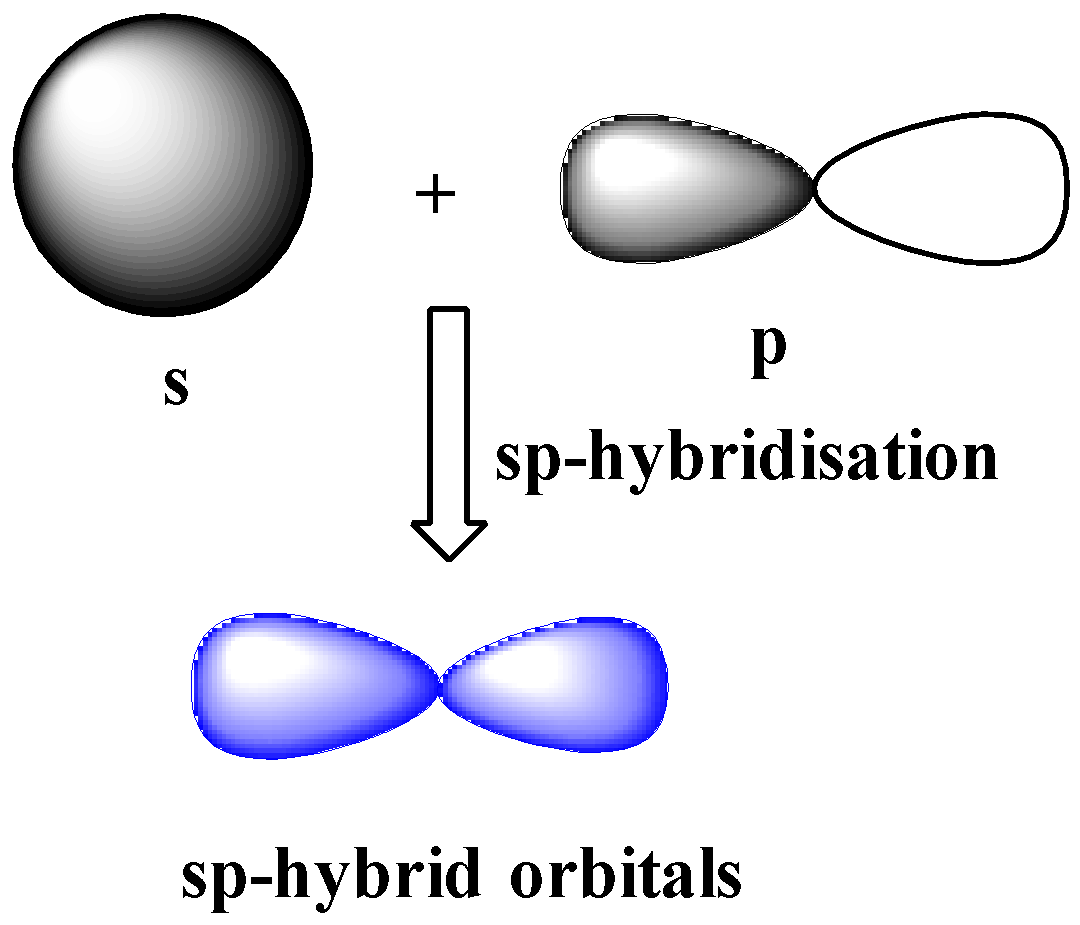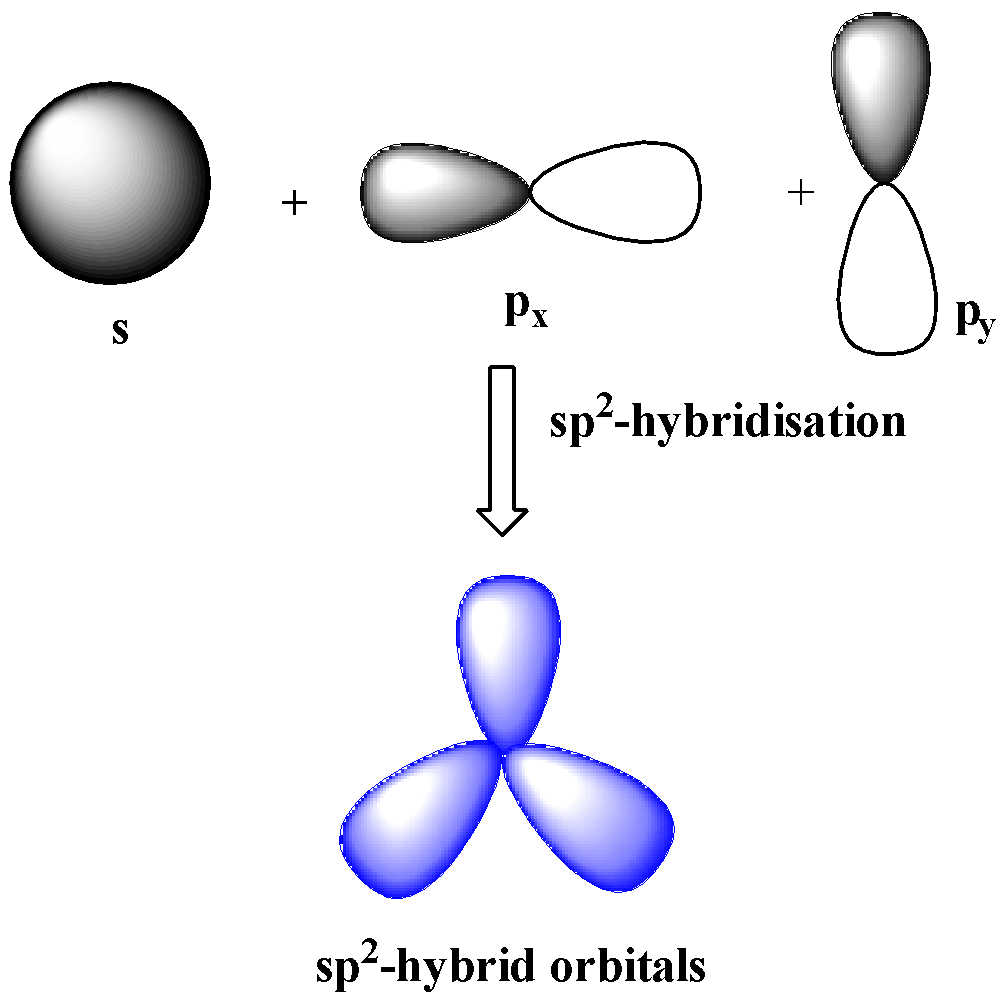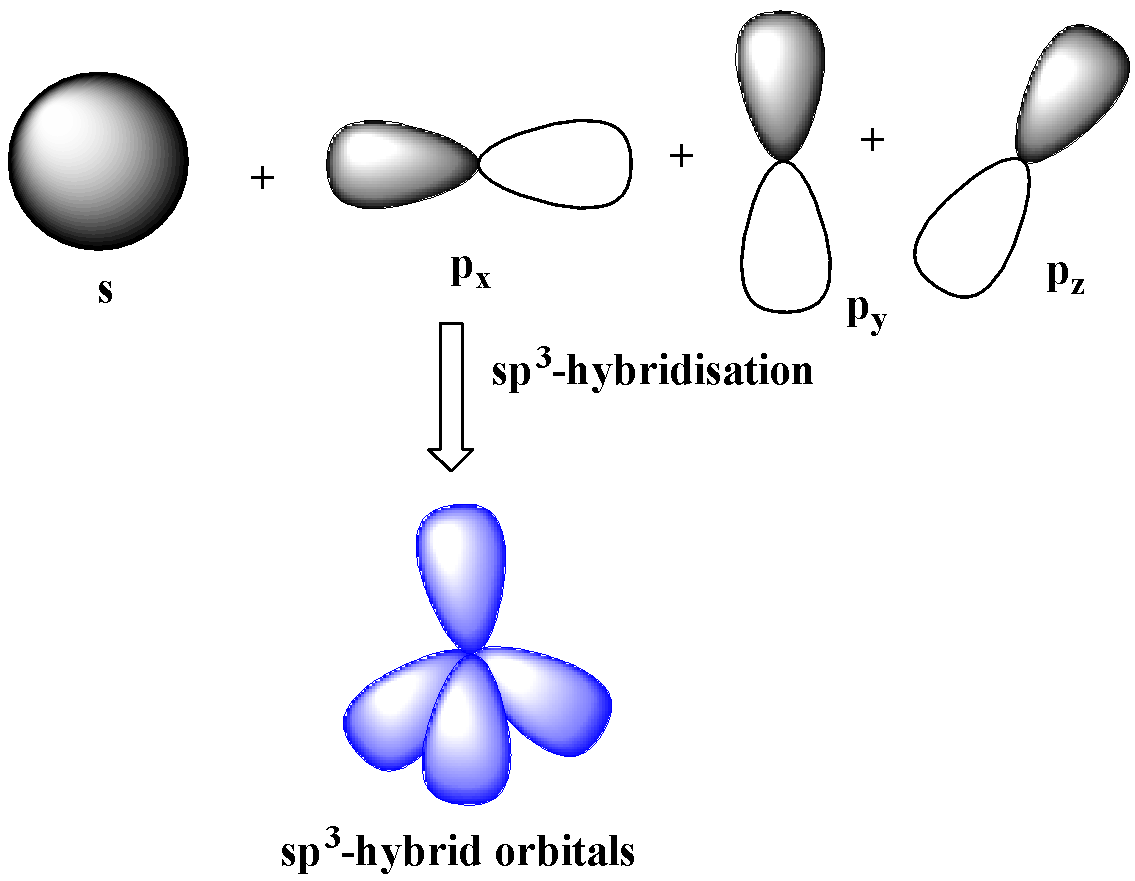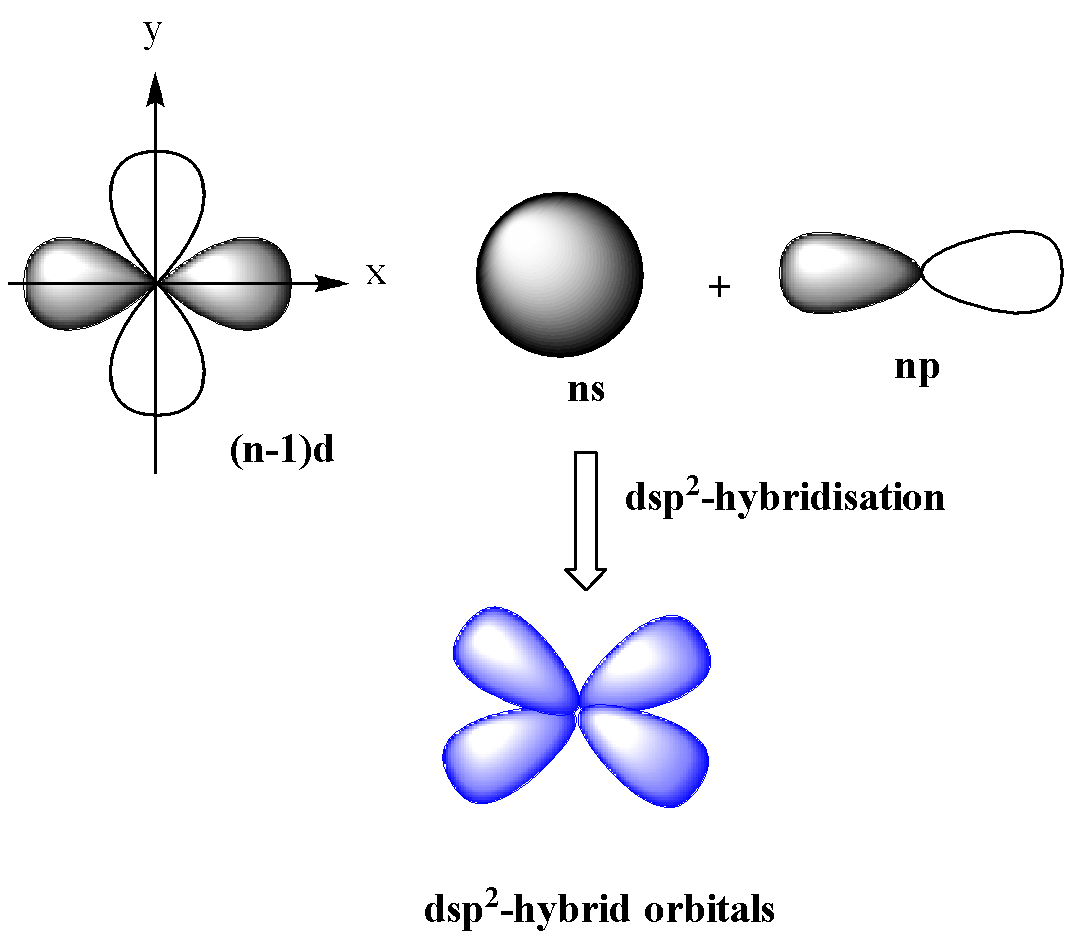
Which hybridization results in non-planar orbitals?
(A)- $sp$
(B)- $s{{p}^{2}}$
(C)- $s{{p}^{3}}$
(D)- $ds{{p}^{2}}$
Answer
486.9k+ views
Hint: Hybridization is the mixing of atomic orbitals of comparable energies belonging to the same shell, to form new orbitals of equal energy and shape. Angle between the four hybrid orbitals in $s{{p}^{3}}$-hybridization is ${{109}^{o}}{{28}^{\prime }}$.
Complete answer:
The shapes of molecules can be determined from the type hybridization the molecule is undergoing. Let us now discuss the shapes of the hybrid orbitals resulting from the above given hybridizations.
sp-hybridization
One s and one p orbital of the same shell of an atom combine or hybridize together to form two identical hybrid orbitals. The new hybrid orbitals formed due to hybridization of s and p orbitals are called sp hybrid orbitals.

The new hybrid orbitals formed due to hybridization of s and p orbitals are called sp hybrid orbitals. These orbitals have ${{180}^{o}}$ angle between then and are collinear.
$s{{p}^{2}}$-hybridization
When one s and two p orbitals of the same shell mix together to form three orbitals of equal energy and identical shape, the hybridization is $s{{p}^{2}}$ hybridization. The three hybrid orbitals make ${{120}^{o}}$ with one another and are in the same plane. $s{{p}^{2}}$ hybridization leads to trigonal planar geometry.

$s{{p}^{3}}$-hybridization
One s and three p-orbitals belong to the same shell mix together to four new equivalent orbitals.

These orbitals rearranged in a regular tetrahedron making an angle of ${{109.5}^{o}}$ with one another. Therefore, these orbitals are non-planar.
$ds{{p}^{2}}$-hybridization
In this type of hybridization, one d (${{d}_{{{x}^{2}}-{{y}^{2}}}}$) orbital of lower shell and one s and p orbital of the next shell mix together to form four orbitals of identical shapes and equal energy.

These orbitals are in the same plane having an angle of ${{90}^{o}}$ with one another. $ds{{p}^{2}}$-hybridization gives square planar geometry.
Based on the above discussion, we can see that $s{{p}^{3}}$-hybridization leads to non-planar orbitals.
So, the correct answer is “Option C”.
Note: Do not confuse yourself between $ds{{p}^{2}}$ and $s{{p}^{3}}$. Both involve the hybridization of four orbitals. But the orbitals involved in hybridization are different in the two cases. $s{{p}^{3}}$ leads to non-planar tetrahedral geometry whereas $ds{{p}^{2}}$ leads to square planar geometry.
Complete answer:
The shapes of molecules can be determined from the type hybridization the molecule is undergoing. Let us now discuss the shapes of the hybrid orbitals resulting from the above given hybridizations.
sp-hybridization
One s and one p orbital of the same shell of an atom combine or hybridize together to form two identical hybrid orbitals. The new hybrid orbitals formed due to hybridization of s and p orbitals are called sp hybrid orbitals.

The new hybrid orbitals formed due to hybridization of s and p orbitals are called sp hybrid orbitals. These orbitals have ${{180}^{o}}$ angle between then and are collinear.
$s{{p}^{2}}$-hybridization
When one s and two p orbitals of the same shell mix together to form three orbitals of equal energy and identical shape, the hybridization is $s{{p}^{2}}$ hybridization. The three hybrid orbitals make ${{120}^{o}}$ with one another and are in the same plane. $s{{p}^{2}}$ hybridization leads to trigonal planar geometry.

$s{{p}^{3}}$-hybridization
One s and three p-orbitals belong to the same shell mix together to four new equivalent orbitals.

These orbitals rearranged in a regular tetrahedron making an angle of ${{109.5}^{o}}$ with one another. Therefore, these orbitals are non-planar.
$ds{{p}^{2}}$-hybridization
In this type of hybridization, one d (${{d}_{{{x}^{2}}-{{y}^{2}}}}$) orbital of lower shell and one s and p orbital of the next shell mix together to form four orbitals of identical shapes and equal energy.

These orbitals are in the same plane having an angle of ${{90}^{o}}$ with one another. $ds{{p}^{2}}$-hybridization gives square planar geometry.
Based on the above discussion, we can see that $s{{p}^{3}}$-hybridization leads to non-planar orbitals.
So, the correct answer is “Option C”.
Note: Do not confuse yourself between $ds{{p}^{2}}$ and $s{{p}^{3}}$. Both involve the hybridization of four orbitals. But the orbitals involved in hybridization are different in the two cases. $s{{p}^{3}}$ leads to non-planar tetrahedral geometry whereas $ds{{p}^{2}}$ leads to square planar geometry.
Recently Updated Pages
Master Class 11 Economics: Engaging Questions & Answers for Success

Master Class 11 Business Studies: Engaging Questions & Answers for Success

Master Class 11 Accountancy: Engaging Questions & Answers for Success

The correct geometry and hybridization for XeF4 are class 11 chemistry CBSE

Water softening by Clarks process uses ACalcium bicarbonate class 11 chemistry CBSE

With reference to graphite and diamond which of the class 11 chemistry CBSE

Trending doubts
What are the elders in Goa nostalgic about class 11 social science CBSE

Formaldehyde at room temperature is ALiquid BGas CSolid class 11 chemistry CBSE

Define least count of vernier callipers How do you class 11 physics CBSE

Distinguish between Mitosis and Meiosis class 11 biology CBSE

Why are forests affected by wars class 11 social science CBSE

Explain zero factorial class 11 maths CBSE




